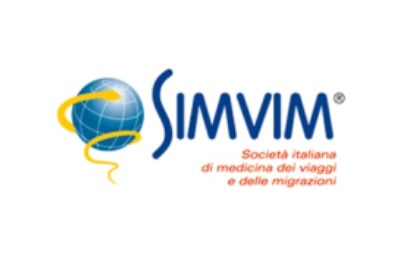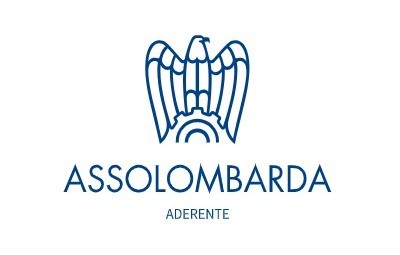LEISHMANIASIS
Known for centuries under various names (for which a description of symptoms can be found engraved in stone tablets dating all the way back to the Assyrian king Ashurbanipal, in the 7th century BC), it was described with precision for the first time in 1756 by the Scottish physician and naturalist Alexander Russel. Present in almost 90 countries, it is one of the main neglected tropical diseases (NTDs).
CAUSES
Leishmaniasis is a zoonosis (disease transmitted from animals to humans) caused by more than 20 species of parasites of the genus Leishmania, hemoflagellate protozoa (i.e. equipped with a flagellum that moves within the blood) asexual and dixenes (whose life cycle takes place internally within two separate hosts).
The parasite has several stages of evolution during its life cycle. Staring in the form of a promastigote, in which it has an elongated shape and a flagellum, it penetrates the host during the blood meal of the vector insect, reaching the bloodstream where it is attacked by macrophages. Within these it transforms into the amastigote stage, in which the shape becomes oval and the flagellum withdraws into the membrane, preventing its autonomous mobility. It is at this stage that replication occurs, which continues until the lysis (destruction) of the cell is completed, resulting in the release of amastigotes into the bloodstream, where they can infect new cells.
Remaining present in the blood, it is therefore capable of infecting new insects during the blood meal, which transports it to the vector's intestine where it returns to the promastigote stage, multiplies by binary fission and migrates towards the vector's salivary glands for a new transmission cycle.
TRANSMISSION
The vectors are over 90 species of sand flies, or pappataci, small mosquito-like midges whose females feed on blood during egg maturation and are therefore at risk of receiving and transmitting the parasite. More than 70 different animal species (including dogs and rodents) are estimated to serve as intermediate hosts of the parasite, capable of infecting sandflies.
It is also possible, although rare, the direct transmission of the disease from man to man following blood transfusions or with the use of infected syringes.
GEOGRAPHICAL DISTRIBUTION
Leishmaniasis is endemic in nearly 90 countries in Asia, North Africa and tropical Africa, Mediterranean Europe (including Italy, France and Spain) and Central and South America, with some cases also in the southern USA. It is more frequent in rural areas, where sandflies tend to live, but it can also be found on the borders of urban regions and there is a real risk that climate change will lead to a significant enlargement of endemic regions, creating suitable habitats for sandflies.
SYMPTOMS
Leishmaniasis has three main forms in which it can manifest itself:
Cutaneous leishmaniasis, the most common form, causing skin lesions such as papules and nodules, which can evolve into ulcers and crusts, usually concentrated in exposed areas such as the legs, arms and face. It can be accompanied by swelling of the glands near the lesions. Lesions can appear in considerable numbers (even over 200 individual lesions) and leave scars after healing.
Mucocutaneous leishmaniasis, which causes lesions capable of leading to the destruction of the mucous membranes of the nose, mouth and throat, and of the surrounding tissues, also leading to serious disfigurations. It is also known as "espundia".
Visceral leishmaniasis, or kala azar, is the most severe form, manifesting with periods of irregular fever, malaise, weight loss, anemia, leukopenia and thrombocytopenia (deficiency of red, white blood cells and platelets), abdominal pain with enlarged liver and spleen. If left untreated, it has a mortality rate of up to 100%.
5-10% of patient cases (generally in the Indian subcontinent and East Africa) with visceral leishmaniasis may develop a cutaneous form that typically appears between 6 months and 1 year after apparent recovery.
Of particular concern is Leishmania/HIV co-infection, particularly in cases of visceral leishmaniasis. On the one hand, the parasite speeds up the infection from HIV (and also from other diseases such as tuberculosis and pneumonia), on the other hand the HIV virus increases the risk of contracting leishmaniasis by 100 to 1000 times more. Coinfection helps to weaken the immune system (both virus and parasite target the same cells), increasing the chances of developing a severe form, with high mortality rates and numerous relapses.
DIAGNOSIS
Diagnosis is made by observing clinical symptoms combined with confirmatory tests. In the case of visceral leishmaniasis, a serological test for the search for antibodies can also be used, while for cutaneous and mucocutaneous forms it is necessary to resort to parasitological tests on samples taken from the lesions (cutaneous form) or from the bone marrow (visceral form). ), such as the detection of amastigotes under a microscope or with polymerase chain reaction (PCR) testing.
TREATMENT
Various drugs are available for the treatment of leishmaniasis, the choice of which largely depends on the characteristics of the patient, the form of the disease, the geographical region of infection and the species of parasite responsible, to be identified following a careful analysis of the case.
For the cutaneous form, which is able to heal spontaneously, control therapies can be used in the case of small lesions. If the lesions are small and simple, topical treatments such as injections of sodium stibogluconate or topical paromomycin, cryotherapy, or heat therapy can be used.
In more severe cases, or in the presence of other forms, systemic treatments are used with IV liposomal amphotericin or oral miltefosine, or IV amphotericin B deoxycholate or pentavalent antimonials (sodium stibogluconate, meglumine antimonate) IV or IM if the species infector is susceptible to such treatments.
Particular attention should be paid to cases of coinfection, in which immunosuppression reduces the effectiveness of the treatment and increases the risk of recurrence. Retroviral drugs for the management of AIDS can help restore immune system function and promote healing.
In the case of the visceral form, supportive therapies are often necessary, such as blood transfusions, administration of antibiotics for secondary infections and feeding control.
PREVENTION
No vaccines against human leishmaniasis are currently available, however careful behavioral prophylaxis is essential to reduce the risk of being stung by parrots. In endemic areas care should be taken to cover themselves with thick clothing, apply repellents and avoid exposure to risk at dusk and at night. It is advisable to treat clothes and equipment (such as mosquito nets) with permethrin. Population control plans of phlebotomas and reservoir animals (particularly dogs and rodents) may assist in reducing the risk of infection, but their effectiveness largely depends on the specific characteristics of the region.





